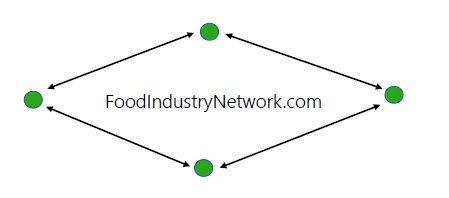More wheat, less canola in 2024/25 says Statistics Canada

Glacier Farm Media | MarketsFarm – Statistics Canada reported more wheat was grown in 2024/25, while canola production fell back as the agency issued its principal field crops report on Dec. 5.
Unlike StatCan’s reports in August and September, which are based on models using satellite imagery, its December report relied heavily on surveys sent to approximately 27,200 farmers across the country. The surveys were to be returned in November.
All wheat production came in at 34.96 million tonnes, compared to September’s estimate of 34.29 million and up 6.1 per cent from the 32.95 million combined in 2023/24. The average trade guess pegged all wheat at 35.04 million tonnes.
Read Also


Feed Grain Weekly: Barley, corn the same price
Domestic feed barley and United States corn imports are pretty much the same price in Western Canada, said Darcy Haley, vice-president of Ag Value Brokers in Lethbridge.
StatCan attributed the year-over-year increase to better yields on the Canadian Prairies, which countered a small decrease in harvested acres. Yields for all wheat rose to 48.80 bushels per acre in 2024/25, up three from the previous year, while harvest acres slipped to 26.31 million from 26.44 million in 2023/24.
Of the 2024/25 harvest, spring wheat accounted for 26.08 million tonnes, up from StatCan’s previous estimate of 25.28 million and rising 2.2 per cent from the 25.52 million reaped in 2023/24.
At 5.87 million tonnes, durum stepped back from September’s 6.03 million but jumped 43.6 per cent from the 4.09 million gleaned in 2023/24. While winter wheat nudged up to 3.01 million tonnes from StatCan’s previous call of 2.99 million, it’s down 9.8 per cent from the 3.34 million in 2023/24.
Despite the gains made in wheat, Jerry Klassen of Resilient Capital in Winnipeg, said he doesn’t see the StatCan wheat numbers having much of an impact.
“I think it’s kind of neutral for the market, basically right in line with trade expectations,” he commented.
Canola dropped to 17.84 million tonnes from 18.98 million in September, with StatCan pointing to the summer heatwave on the Prairies impacting the 2024/25 crop. Production came in seven per cent lower from 19.19 million tonnes harvested in 2023/24, and below the average trade guess of 18.51 million.
“It’s a surprise for the trade, although there was a lot of skepticism about the yields in Saskatchewan and Alberta. But Manitoba had great yields,” Klassen said.
With reduced canola production, he stressed two things, with one being the oilseed’s demand will have to be rationed for it to maintain its premium over soybeans.
“Secondly, I think for next spring the market needs to encourage production. That’s barring any tariffs by China or the United States,” Klassen stated.
Corn production changed very little from 2023/24, with StatCan placing it at 15.35 million tonnes versus 15.17 million in September and dipping 0.5 per cent from last year’ 15.42 million.
While barley improved to 8.14 million tonnes from 7.60 million in September, the crop fell back 8.5 per cent from the 8.91 million combined in 2023/24.
Soybeans rose to 7.57 million tonnes from 7.20 million in in StatCan’s previous report and improved 8.4 per cent from the 6.98 million produced last year.
Oats were another crop that made gains in 2024/25, with the data agency estimating 3.36 million tonnes were brought in as opposed to the September call of 3.02 million. And oats climbed 27.1 per cent from the 2.64 million tonnes in 2023/24.
Although the estimate for dry peas slipped to slightly below three million tonnes from 3.16 million in September, the crop was up 14.9 per cent from the 2.61 million harvested in 2023/24.
Lentils slipped to 2.43 million tonnes from 2.59 million in September but jumped 35 per cent from the 1.80 million harvested in 2023/24.
Source: Farmtario.com

